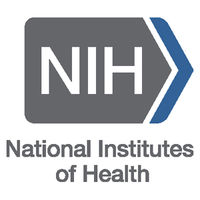Request Demo
Last update 08 May 2025
P2Y14
Last update 08 May 2025
Basic Info
Synonyms G protein-coupled receptor 105, G-protein coupled receptor 105, GPR105 + [7] |
Introduction Receptor for UDP-glucose and other UDP-sugar coupled to G-proteins. Not activated by ATP, ADP, UTP or ATP. |
Related
10
Drugs associated with P2Y14Target |
Mechanism P2Y14 antagonists |
Active Org. |
Originator Org. |
Active Indication |
Inactive Indication- |
Drug Highest PhasePreclinical |
First Approval Ctry. / Loc.- |
First Approval Date20 Jan 1800 |
Target |
Mechanism P2Y14 antagonists |
Active Org. |
Originator Org. |
Active Indication |
Inactive Indication- |
Drug Highest PhasePreclinical |
First Approval Ctry. / Loc.- |
First Approval Date20 Jan 1800 |
Target |
Mechanism P2Y14 antagonists |
Originator Org. |
Active Indication |
Inactive Indication- |
Drug Highest PhasePreclinical |
First Approval Ctry. / Loc.- |
First Approval Date20 Jan 1800 |
100 Clinical Results associated with P2Y14
Login to view more data
100 Translational Medicine associated with P2Y14
Login to view more data
0 Patents (Medical) associated with P2Y14
Login to view more data
167
Literatures (Medical) associated with P2Y1401 May 2025·European Journal of Medicinal Chemistry
Discovery of a potent and in vivo anti-inflammatory Efficacious, P2Y14R antagonist with a novel benzisoxazoles scaffold by DNA-encoded chemical library technology
Article
Author: Yao, Yongfang ; Yang, Longhua ; Duan, Yongtao ; Chen, Suyi ; Han, Bingqian ; Song, Chuanjun ; Wei, Zhiyi ; Nakai, Takashi ; Zhao, Jiannan
01 Mar 2025·Translational Cancer Research
Molecular subtype and prognostic model of laryngeal squamous cell carcinoma based on neutrophil extracellular trap-related genes
Article
Author: Liao, Jiahua ; Jin, Riqun ; Wu, Guiqin ; Zhang, Jianhua ; Liu, Xuemei
01 Feb 2025·Acta Pharmaceutica Sinica B
P2Y14R activation facilitates liver regeneration via CREB/DNMT3b/Dact-2/β-Catenin signals in acute liver failure
Article
Author: Guo, Yanshuo ; Hao, Kun ; Qian, Jialong ; Dong, Xinli ; Yin, Li ; Zhou, Mengze ; Hu, Qinghua ; Liu, Chunxiao ; Li, Yehong
1
News (Medical) associated with P2Y1407 Jul 2022
The quest to develop a new treatment approach to amyotrophic lateral sclerosis (ALS) may soon be shortened due to the discovery of new potential therapeutic targets by Insilico Medicine.
Using a proprietary AI-driven target discovery engine called PandaOmics, New York-based Insilico found genes that could serve as potential targets for new therapeutics. Insilico’s research is being conducted in collaboration with Answer ALS, a global research project aimed at finding new therapies and a potential cure for ALS. The AI-driven discovery engine analyzed expression profiles of central nervous system samples from public datasets and direct iPSC-derived motor neurons (diMN) from Answer ALS.
As a result, the study identified 17 high-confidence and 11 novel therapeutic targets. These targets were further validated in a model that mimics the most common genetic cause of ALS. Insilico said eight unreported genes, including KCNB2, KCNS3, ADRA2B, NR3C1, P2RY14, PPP3CB, PTPRC and RARA strongly “rescue neurodegeneration through their suppression.” The findings from this study were published in Frontiers in Aging Neuroscience.
“The results of this collaborative research effort show what is possible when we bring together human expertise with AI tools to discover new targets for diseases where there is a high unmet need,” Alex Zhavoronkov, founder and CEO of Insilico said in a statement. “This is only the beginning.”
ALS, also known as Lou Gehrig’s disease, is a progressive neurodegenerative disease that negatively affects neurons in the brain and the spinal cord. Patients with ALS rapidly lose the ability to control muscle movement. That eventually leads to total paralysis and then death. It is estimated that approximately 12,000 to 15,000 Americans have ALS, with about 5,000 to 6,000 new cases diagnosed annually.
Currently available drugs, including Riluzole and Mitsubishi Tanabe’s Radicava, do not halt or reverse the loss of function in ALS patients.
Feng Ren, co-CEO and chief scientific officer of Insilico, said the new targets for therapeutics demonstrate the power of the PandaOmics platform.
“It is impressive that around 70% (18 out of 28) targets identified by AI were validated in a preclinical animal model. We are working with collaborators to progress some targets toward clinical trials for ALS. At the same time, we are also further expanding the utilization of PandaOmics to discover novel targets for other disease areas including oncology, immunology and fibrosis,” Ren said in a statement.
Insilico did not announce its plans for the data’s use, but there are likely a number of companies that may opt to approach these potential ALS targets. Several companies, such as Amylyx Pharmaceuticals, NeuroSense and QurAlis are working on potential treatments for this devastating disease. Amylyx's ALS asset, AMX0035, authorized for use in Canada, will be revisited by a U.S. Food and Drug Administration Advistory Committee to re-evaluate the drug candidate following the publication of additional clinical data.
Analysis
Perform a panoramic analysis of this field.
login
or

AI Agents Built for Biopharma Breakthroughs
Accelerate discovery. Empower decisions. Transform outcomes.
Get started for free today!
Accelerate Strategic R&D decision making with Synapse, PatSnap’s AI-powered Connected Innovation Intelligence Platform Built for Life Sciences Professionals.
Start your data trial now!
Synapse data is also accessible to external entities via APIs or data packages. Empower better decisions with the latest in pharmaceutical intelligence.
Bio
Bio Sequences Search & Analysis
Sign up for free
Chemical
Chemical Structures Search & Analysis
Sign up for free



